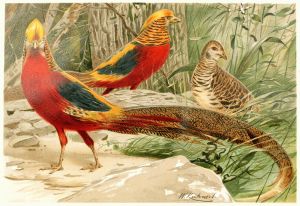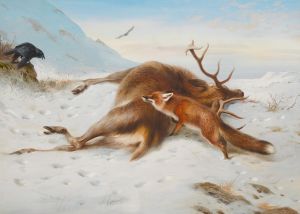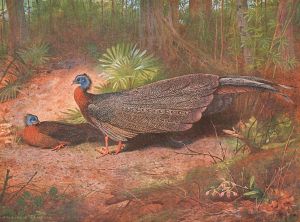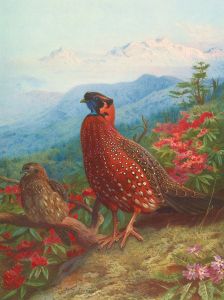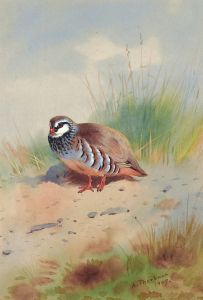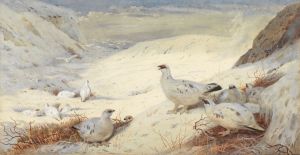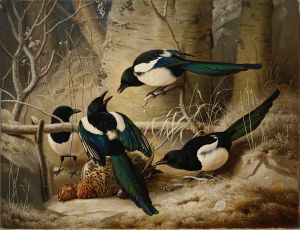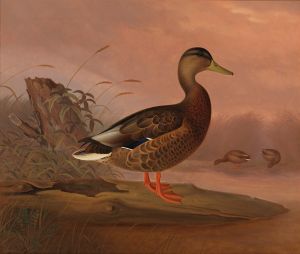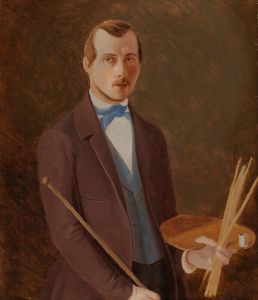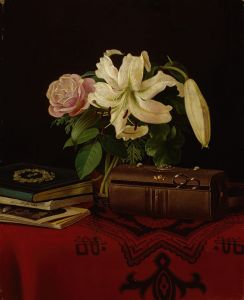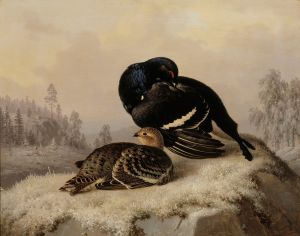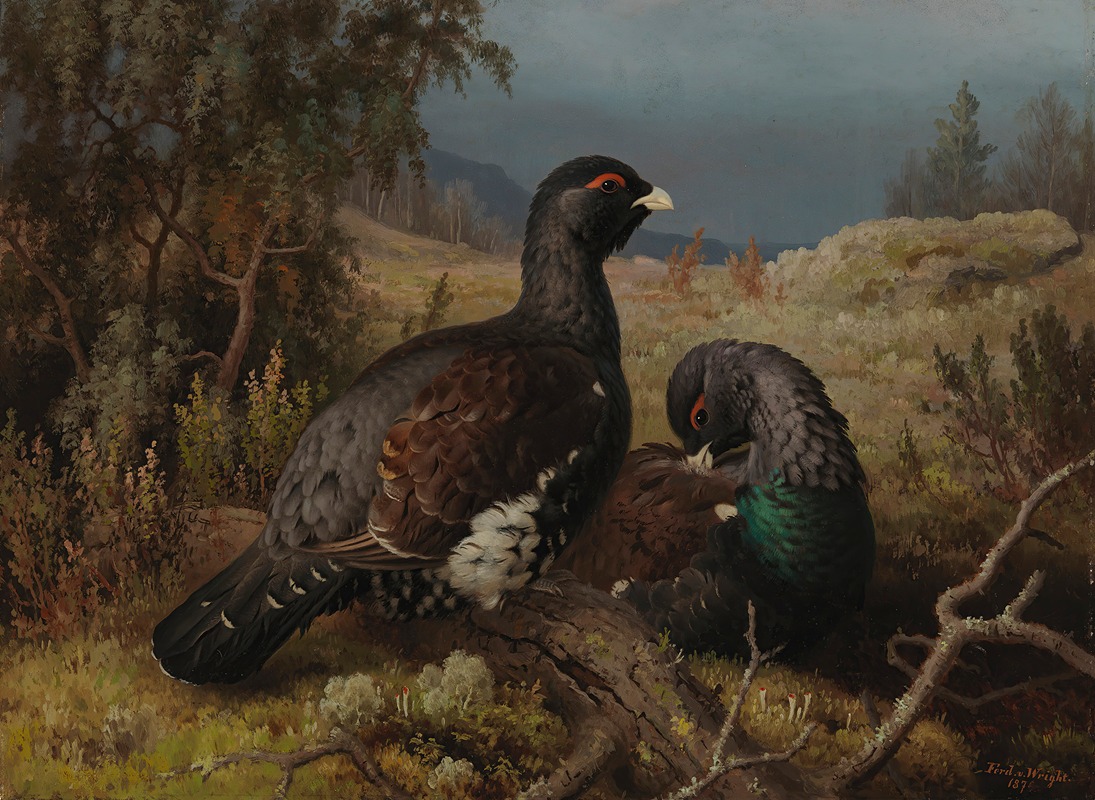
Capercaillie Cocks
A hand-painted replica of Ferdinand von Wright’s masterpiece Capercaillie Cocks, meticulously crafted by professional artists to capture the true essence of the original. Each piece is created with museum-quality canvas and rare mineral pigments, carefully painted by experienced artists with delicate brushstrokes and rich, layered colors to perfectly recreate the texture of the original artwork. Unlike machine-printed reproductions, this hand-painted version brings the painting to life, infused with the artist’s emotions and skill in every stroke. Whether for personal collection or home decoration, it instantly elevates the artistic atmosphere of any space.
Ferdinand von Wright was a Finnish painter known for his detailed and realistic depictions of wildlife, particularly birds. One of his notable works is "Capercaillie Cocks," which exemplifies his skill in capturing the natural world with precision and artistry. This painting is a significant piece within von Wright's oeuvre, showcasing his ability to portray the intricate details of avian life and their natural habitats.
"Capercaillie Cocks" depicts a scene featuring capercaillies, a type of large woodland grouse native to Europe and parts of Asia. These birds are known for their striking appearance and elaborate courtship displays, which von Wright captures with remarkable attention to detail. The painting illustrates the birds in a natural setting, likely a forested area, which is typical of their habitat. The composition highlights the vibrant plumage and distinctive features of the capercaillies, emphasizing their physical characteristics and the dynamic interaction between them.
Ferdinand von Wright was part of a family of artists, and his brothers Magnus and Wilhelm von Wright were also accomplished painters. The von Wright brothers were instrumental in the development of Finnish art in the 19th century, particularly in the realm of natural history illustration. Ferdinand's work, including "Capercaillie Cocks," reflects a deep understanding of ornithology and a commitment to realism, which was a hallmark of his artistic style.
The painting is celebrated for its meticulous detail and the lifelike representation of the birds. Von Wright's technique involved careful observation and study of his subjects, often spending considerable time in nature to accurately capture the essence of the wildlife he depicted. This dedication to realism is evident in "Capercaillie Cocks," where the textures of the feathers, the play of light, and the natural setting are rendered with precision.
"Capercaillie Cocks" is housed in the Ateneum Art Museum, which is part of the Finnish National Gallery in Helsinki. The museum holds a significant collection of Finnish art, and von Wright's work is an important part of this collection, representing the intersection of art and natural history. The painting is appreciated not only for its artistic merit but also for its contribution to the documentation and appreciation of Finland's natural heritage.
Ferdinand von Wright's legacy as an artist is closely tied to his ability to blend scientific observation with artistic expression. His paintings, including "Capercaillie Cocks," continue to be studied and admired for their technical skill and their role in the broader context of 19th-century European art. Through his work, von Wright has left an enduring impact on the appreciation of wildlife art, influencing both contemporary artists and naturalists.
In summary, "Capercaillie Cocks" by Ferdinand von Wright is a masterful representation of wildlife art, characterized by its detailed depiction of capercaillies in their natural environment. The painting is a testament to von Wright's skill as an artist and his dedication to capturing the beauty and complexity of the natural world.





